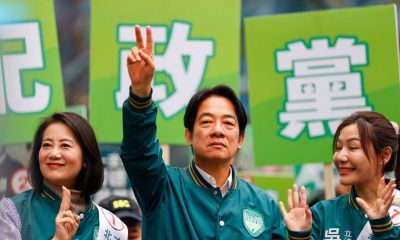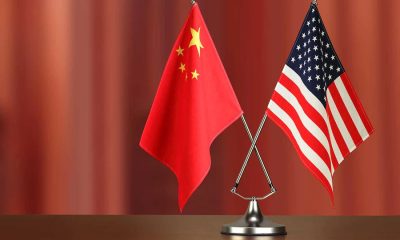Asia Pacific
What the Execution in North Korea Means for America
A South Korean spy agency has reported that Kim Jong-Un has executed his defense minister. Hyon Yong Chol, a 66 year old experienced member of North Korea’s inner circle, was killed after he fell asleep during a military ceremony. In a vacuum this would certainly not be reason for execution however, this was not the first time Kim Jong-Un felt disrespected.
It had been reported that Hyon overtly disobeyed the dictator on multiple occasions, publicly expressing discontent and even disregarding orders. Looking for any reason to dispense of yet another high-ranking official, nodding off broke the camel’s back, giving Kim Jong-Un the reason he needed for a brutal execution.
Hyon Yong Chol was executed with an anti-aircraft gun powerful enough to disintegrate skin and leave the body unrecognizable. The killing most likely took place on April 30th in Pyongyang.
This was not the first time a high-ranking official has been executed by the supreme leader. Jang Song Thaek, once his uncle and by many counts the second in command, was executed late in 2013. Thaek was Kim Jong-Un’s overseer, but when the young leader felt threatened, he immediately disposed of his mentor citing ‘anti-state’ actions.
According to the NIS, Kim Jong-Un has killed more than 70 high-ranking officials since his ascension to power in 2011. This signifies a larger trend; a trend of instability.
The fact that there is turmoil in the high throws of this regime suggests instability. Instability leads to a loss of control and eventual revolution. Clearly many leaders in North Korea either disagree with Kim Jong-Un, or see him as vulnerable. Lacking the respect his father garnered, the supreme leader is attempting to gain respect through intimidation, however that rarely works.
The third of a diabolical dynasty that has retained power since 1948, the Kim family may be seeing its empire finally crumble from widespread poverty, discontent and the ever-increasing pressures from globalization.
There has been considerable speculation about the state of affairs in North Korea. This ‘extermination’ process as many are dubbing it should be concerning yet promising for the United States.
The United States should be disturbed by this trend for a few reasons. First, while instability can lead to revolution, other less desirable outcomes are certainly not off the table. For one, China has close ties and significant leverage over the Kim family. China has a neocolonialist relationship with North Korea allowing for the imposition of Chinese interests into daily decisions. Chinese intervention, overt or covert, may increase the regime’s resources prolonging its reign and preclude international involvement for fear of crossing China, one of the most powerful countries in the world.
Additionally, no dictator has ever peacefully ceded power to protestors. The direct exertion of authority to quell public discontent is routine in North Korea, meaning any revolution will be excruciatingly bloody.
America must keep a close eye on this developing situation. The execution of Hyon Yong Chol should draw attention to a red flag that went up a while ago. With inconclusive intelligence reports, there is no way of decisively measuring how unstable North Korea truly is. As a product of inadequate information, there is no way to forecast how North Korea will choose to proceed.
The threat of North Korea is its irrationality and unpredictability in the sphere of international relations. If this is the beginning of the end for a North Korean dynasty, the journey towards the dissolution of this autarky is dark and bloody.
Asia Pacific
China earthquake death toll rises to 149, two still missing after a week.
The death toll from the China earthquake rises to 149, with two still missing after a week. At least 149 people were murdered in a rural location in the northern part of China by one of the most severe earthquakes that China has seen in recent years, according to official media. Two people are still missing following the magnitude-6.2 earthquake a week ago.
The earthquake’s epicenter was located in an area encompassing both the provinces of Gansu and Qinghai. The Hui people of China, a relatively small ethnic minority that stands out for having a distinctive Muslim identity, reside in significant numbers in this area.
The quake’s violent vengeance was felt most strongly in Gansu. Almost 200,000 dwellings were destroyed, and 15,000 homes were on the verge of collapsing, according to reports from Chinese official media. In the province, the severe earthquakes caused 145,000 people to be displaced, and as of December 22, 117 people had been killed and 781 others had been injured.
According to official media, as of 11 p.m. (1500 GMT) on Sunday, 32 people had perished, and two more were still missing in the region of Qinghai, which is located west of Gansu.
The local authorities have determined that the shallowness of the earthquake is responsible for the severity of the damage. The thrust-type rupture during the earthquake and the comparatively soft sedimentary rock in the area contributed to the shakes’ significantly increased destructive power.
Most of the destroyed residences were constructed at an earlier age and were constructed out of brick-wood or earth-wood buildings. Because their load-bearing walls were created from the earth, the local authorities have stated they have inadequate defenses against earthquakes.
In addition, they stated that the tragedy has brought to light the critical need to increase the earthquake resilience of dwellings in rural areas.
Those provinces that are located on the northeastern limit of the tectonically active Qinghai-Tibetan plateau, which includes the majority of Tibet, Qinghai, Gansu, and sections of Xinjiang, as well as the rocky highlands in the western part of Sichuan, are prone to experiencing earthquakes.
In the province of Sichuan, a magnitude-6.6 earthquake occurred ten years ago, resulting in the injuries of over 6,700 people and the deaths of over 160 others. Two thousand seven hundred people lost their lives as a result of the devastating earthquake that struck Yushu, which is primarily Tibetan, in 2010.
Asia Pacific
North Korea vows more satellite launches, beefs up military on border.
On Monday, North Korea issued a warning that it will continue to exercise its sovereign rights, including through the launch of satellites. At the same time, reports indicated that its forces were repairing some guard posts destroyed on the South Korean border.
According to reports from North Korean official media, the foreign ministry of North Korea stated that monitoring the United States and its allies was the impetus behind the launch of a reconnaissance satellite last week.
“It is a legal and just way to exercise its right to defend itself and thoroughly respond to and precisely monitor the serious military action by the U.S. and its followers,” according to the KCNA investigation.
With nuclear weapons. North Korea launched the satellite on Tuesday, and the North Korean government claimed it had successfully entered orbit and sent images. However, South Korean defense officials and analysts stated that the capabilities of the satellite had not been independently verified.
Following the launch, South Korea resumed aircraft monitoring along the demilitarized zone and suspended a crucial condition in an inter-Korean military agreement in 2018.
In response, North Korea said that the deal would no longer bind it and would instead position weaponry along the border with South Korea.
According to the defense ministry of South Korea, North Korean soldiers have been seen transporting heavy weaponry back into the Demilitarized Zone (DMZ) border and putting up guard posts, even though the two nations are supposed to have dismantled the guard posts as part of the deal.
According to estimates provided by South Korea, the North maintained around 160 guard stations along the DMZ, while the South maintained only 60. After the military accord was made in 2018, it was intended to reduce tension and prevent accidental military conflicts. As a result, each side destroyed 11 of them.
According to the South Korean defense ministry, which cited images taken by cameras located in the Demilitarized Zone (DMZ), armed North Korean personnel have been seen repairing damaged guard posts in many areas since Friday.
In addition, they were reportedly installing what seemed to be a recoilless rifle, a portable anti-vehicle weapon or light artillery piece, at a stronghold, according to the report, which also cited an image.
According to KCNA, North Korean leader Kim Jong Un paid another visit to the control center of the space agency in Pyongyang on Monday morning. While there, he studied fresh satellite photographs of several locations, including Rome and the Anderson Air Force base in Guam, which is located in the United States.
According to his office, South Korean President Yoon Suk Yeol was informed on the most recent acts carried out by North Korea and issued an order to prepare the troops.
Monday was an unplanned meeting of the United Nations Security Council that the United States convened to discuss the satellite launch that North Korea conducted.
On November 22, nine other members of the Security Council joined the United States in issuing a statement that condemned the North Korean satellite launch for utilizing ballistic missile technology and referred to the launch as a breach of several resolutions passed by the Security Council.
The Foreign Ministry of North Korea stated that the statement just demonstrated how dysfunctional the United Nations Security Council had become, with some member nations mindlessly following the United nations in releasing worthless pronouncements.
Despite Pyongyang’s ongoing testing of ballistic missiles with ever-increasing destructive potential, China and Russia, two of the five permanent members of the Security Council that each have a veto, have refused to participate in any fresh sanctions against the country.
They were absent from the most recent statement made the previous week.
America
Joe Biden and Xi Jinping meet amid disputes over military and economic issues
For the first time in a year, U.S. President Joe Biden met with Chinese Leader Xi Jinping on Wednesday, potentially reducing tensions between the two giants over military conflicts, drug trafficking, and artificial intelligence.
At the Filoli estate, a rural home and gardens around 30 miles (48 km) south of San Francisco, where they would later travel for an Asia-Pacific Economic Cooperation (APEC) forum session, Biden greeted the Chinese president.
Profound progress on the enormous gaps that separate the presidents of the United States and China may have to wait until another day. Still, they will work to ease tensions in what many consider the most significant relationship in the world.
Expectations are low as Biden and Xi debate issues on which the leaders have not been able to agree for a long time, including human rights, North Korea, the South China Sea, Taiwan, the Israel-Hamas conflict, and Russia’s invasion of Ukraine.
On Tuesday, Biden and Xi traveled to San Francisco, where they will attend the APEC conference.
Against the backdrop of Beijing’s territorial disputes with neighbors, a Middle East crisis alienating the U.S. from friends, and relative Chinese economic weakness, leaders of the twenty-one-nation group convene, accompanied by hundreds of CEOs in San Francisco to woo them.
According to experts, Xi will be hoping for a smooth meeting with Biden to demonstrate to those back home who are worried about the economy and declining foreign investment that he can manage ties between the two biggest economies in the world.
Despite attempts to remove homeless people from the streets, San Francisco’s well-planned visit by Xi could come undone. Protesters supporting and opposing China’s ruling Communist Party clogged the route from the airport to the conference venue, an unusual sight for Xi, who last traveled to the U.S. in 2017.
Far from the APEC conference site, the bilateral summit venue provides the leaders a blend of security, tranquility, and seclusion.
In an attempt to save rapidly strained relations, Biden has pursued direct diplomacy with Xi, placing his trust in the personal bond he has built with the most powerful Chinese leader since Mao Zedong over a dozen years.
The National University of Singapore’s political science professor, Chong Ja Ian, stated that Mao described the two sides’ tactics as “talk and fight, fight and talk” during the Chinese Civil War.
Chong said, “That is, to talk while building up forces.”
The White House hopes the meeting will pave the way for additional discussions.
Before the meeting, White House spokesperson John Kirby told reporters, “We’re all expecting that this will be a productive discussion today, and hopefully, a precursor to much more communication and dialogue between our two teams going forward.”
Iran, meddling in elections, and furanone
Biden is anticipated to put pressure on Xi during the meeting to use China’s clout to persuade Iran to refrain from provocative action or to encourage its proxies to get involved in activities that could spark a regional conflict between Israel and Hamas.
He is also anticipated to bring up human rights, the status of American citizens who Washington believes are being wrongfully detained in China, and alleged Chinese efforts to sway international elections.
Officials from the US were looking forward to concrete steps that would bring back staff-level talks between the two countries on a wide range of issues, such as military-to-military communications, reducing the flow of fentanyl, managing trade and climate, and keeping an eye on the development of artificial intelligence technologies.
U.S. officials claim that a large portion of the chemicals used to make fentanyl originate in China.
Before the meeting, the two nations agreed to support a new goal for renewable energy and committed to lowering methane and plastic pollution. However, their efforts to revive climate cooperation were put on hold when former U.S. Speaker of the House Nancy Pelosi visited Taiwan in 2022.
After the COVID-19 pandemic, Biden’s 80-year-old economy has performed better than most wealthy countries. He is running for office again.
Despite some disagreements regarding the Israel-Hamas conflict, he has rallied the country’s longstanding allies from Europe to Asia to oppose Russia in Ukraine.
Ten years younger than Biden, Xi has tightened control over state leaders, the media, the military, and policy, including amending the constitution. However, the country’s three-decade growth trajectory has been off due to economic issues.
Officials from all across the region anticipate that Beijing will put Washington to the test in the upcoming weeks, capitalizing on what it perceives to be a shift in American attention away from Ukraine and Israel and toward its own goals in the Indo-Pacific.
Biden is anticipated to inform Xi that American commitments in the Indo-Pacific region remain unaltered. China’s actions in the Taiwan Strait, South China Sea, and East China Sea—areas of international dispute—have alarmed its neighbors in recent years.
-
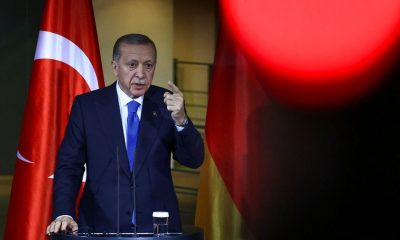
 Geopolitics & Foreign Policy2 months ago
Geopolitics & Foreign Policy2 months agoTurkey’s Erdogan says he may visit Egypt soon, discuss Gaza patients -media.
-
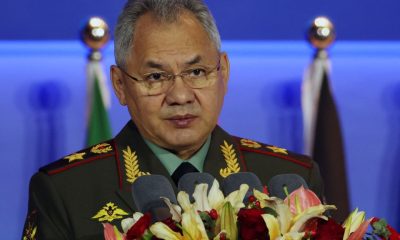
 Europe3 months ago
Europe3 months agoRussia’s Shoigu accuses the West of seeking to expand the Ukraine war to the Asia-Pacific.
-

 Geopolitics & Foreign Policy2 months ago
Geopolitics & Foreign Policy2 months agoCeasefire takes hold in Gaza ahead of hostage release; aid enters enclave.
-

 Geopolitics & Foreign Policy2 months ago
Geopolitics & Foreign Policy2 months agoRussia deploys new nuclear missile in Kaluga region – RIA
-
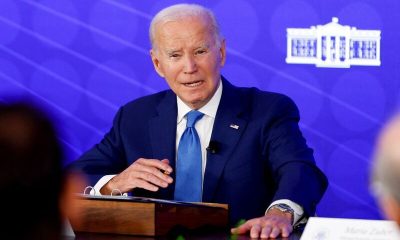
 America4 months ago
America4 months agoRepublican US House to hold first Biden impeachment inquiry hearing
-

 Geopolitics & Foreign Policy2 months ago
Geopolitics & Foreign Policy2 months agoChina’s military: US Navy ship ‘illegally’ entered territorial waters
-
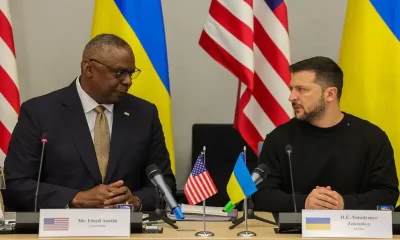
 Europe3 months ago
Europe3 months agoZelenskiy, at NATO HQ, asks for weapons to face winter of ‘terror’
-
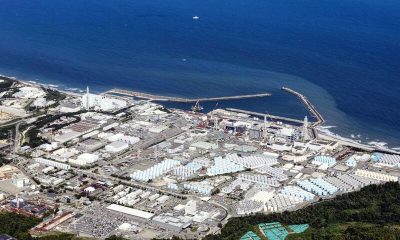
 Agriculture4 months ago
Agriculture4 months agoIAEA, Japan agree on continuous safety review of Fukushima water


